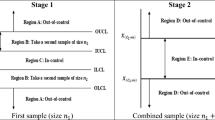Abstract
Conventional approaches to estimating reserves, optimizing mine planning, and production forecasting result in single, and often biased, forecasts. This is largely due to the non-linear propagation of errors in understanding orebodies throughout the chain of mining. A new mine planning paradigm is considered herein, integrating two elements: stochastic simulation and stochastic optimization. These elements provide an extended mathematical framework that allows modeling and direct integration of orebody uncertainty to mine design, production planning, and valuation of mining projects and operations. This stochastic framework increases the value of production schedules by 25%. Case studies also show that stochastic optimal pit limits (i) can be about 15% larger in terms of total tonnage when compared to the conventional optimal pit limits, while (ii) adding about 10% of net present value to that reported above for stochastic production scheduling within the conventionally optimal pit limits. Results suggest a potential new contribution to the sustainable utilization of natural resources.
Similar content being viewed by others
References
J. Whittle, “A decade of open pit mine planning and optimisation — the craft of turning algorithms into packages,” in: APCOM’99 Computer Applications in the Minerals Industries 28th International Symposium, Colorado School of Mines, Golden (1999).
M. David, Handbook of Applied Advanced Geostatistical Ore Reserve Estimation, Elsevier Science Publishers, Amsterdam (1988).
R. Dimitrakopoulos, C.T. Farrelly, and M. Godoy, “Moving forward from traditional optimization: grade uncertainty and risk effects in open-pit design,” Transactions of the Institution of Mining and Metallurgy, Section A: Mining Technology, 111 (2002).
A. G. Journel, “Modelling uncertainty: some conceptual thoughts,” in: Geostatistics for the Next Century, R. Dimitrakopoulos (Ed.), Kluwer Academic Publishers, Dordrecht (1994).
M. Kent, R. Peattie, and V. Chamberlain, “Incorporating grade uncertainty in the decision to expand the main pit at the Navachab gold mine, Namibia, through the use of stochastic simulation”, The Australasian Institute of Mining and Metallurgy, Spectrum Series, 14 (2007).
M. C. Godoy and R. Dimitrakopoulos, “A risk analysis based framework for strategic mine planning and design — Method and application,” Journal of Mining Science, No. 2 (2011).
M. C. Godoy and R. Dimitrakopoulos, “Managing risk and waste mining in long-term production scheduling,” SME Transactions, 316 (2004).
H. Mustapha and R. Dimitrakopoulos, “High-order stochastic simulations for complex non-Gaussian and non-linear geological patterns,” Mathematical Geosciences, 42, No. 5 (2010).
S. A. Abdel Sabour and R. Dimitrakopoulos, “Accounting for joint ore supply, metal price and exchange rate uncertainties in mine design,” Journal of Mining Science, No. 2 (2011).
C. Meagher, S. A. Abdel Sabour, and R. Dimitrakopoulos, “Pushback design of open pit mines under geological and market uncertainties,” The Australasian Institute of Mining and Metallurgy, Spectrum Series No. 17 (2010).
R. Dimitrakopoulos, H. Mustapha, and E. Gloaguen, “High-order statistics of spatial random fields: Exploring spatial cumulants for modelling complex, non-Gaussian and non-linear phenomena,” Mathematical Geosciences, 42, No. 1 (2010).
B. D. Ripley, Stochastic Simulations, J. Wiley & Sons, New York (1987).
A. M. Law and W. D. Kelton, Simulation Modeling and Analysis, McGraw-Hill Higher Education, Singapore (1999).
R. Dimitrakopoulos and X. Luo, “Generalized sequential Gaussian simulation on group size ν and screeneffect approximations for large field simulations,” Mathematical Geology, 36 (2004).
H. Mustapha and R. Dimitrakopoulos “Generalized Laguerre expansions of multivariate probability densities with moments,” Computers & Mathematics with Applications, 60, No. 7 (2010).
A. Leite and R. Dimitrakopoulos, “A stochastic optimization model for open pit mine planning: Application and risk analysis at a copper deposit,” Transactions of the Institution of Mining and Metallurgy: Mining Technology, 116, No. 3 (2007).
F. Albor Consquega and R. Dimitrakopoulos, “Stochastic mine design optimization based on simulated annealing: Pit limits, production schedules, multiple orebody scenarios and sensitivity analysis,” Transactions of the Institution of Mining and Metallurgy: Mining Technology, 118, No. 2 (2009).
S. Ramazan and R. Dimitrakopoulos, “Stochastic optimisation of long-term production scheduling for open pit mines with a new integer programming formulation,” The Australasian Institute of Mining and Metallurgy, Spectrum Series, 14 (2007).
S. Ramazan and R. Dimitrakopoulos, “Production scheduling with uncertain supply — A new solution to the open pit mining,” COSMO Research Report, No. 2, McGill University, Montreal (2008).
M. Menabde, G. Froyland, P. Stone, and G. Yeates, “Mining schedule optimisation for conditionally simulated orebodies,” The Australasian Institute of Mining and Metallurgy, Spectrum Series, 14 (2007).
A. Leite and R. Dimitrakopoulos, “Production scheduling under metal uncertainty — Application of stochastic mathematical programming at an open pit copper mine and comparison to conventional scheduling,” The Australasian Institute of Mining and Metallurgy, Spectrum Series, 17 (2010).
S. Geman and D. Geman, “Stochastic relaxation, Gibbs distribution, and the Bayesian restoration of images,” IEEE Transactions on Pattern Analysis and Machine Intelligence, PAMI-6, 6 (1984).
H. Lerchs and I. F. Grossmann, “Optimum design of open pit mines,” CIM Bulletin, Canadian Institute of Mining and Metallurgy, 58 (1965).
R. Dimitrakopoulos and S. Ramazan, “Stochastic integer programming for optimizing long term production schedules of open pit mines: methods, application and value of stochastic solutions,” Transactions of the Institution of Mining and Metallurgy, Section A: Mining Technology, 117, No. 4 (2008).
R. Dimitrakopoulos and S. Ramazan, “Uncertainty based production scheduling in open pit mining,” SME Transactions, 316 (2004).
Author information
Authors and Affiliations
Corresponding author
Rights and permissions
About this article
Cite this article
Dimitrakopoulos, R. Stochastic optimization for strategic mine planning: A decade of developments. J Min Sci 47, 138–150 (2011). https://doi.org/10.1134/S1062739147020018
Published:
Issue Date:
DOI: https://doi.org/10.1134/S1062739147020018




